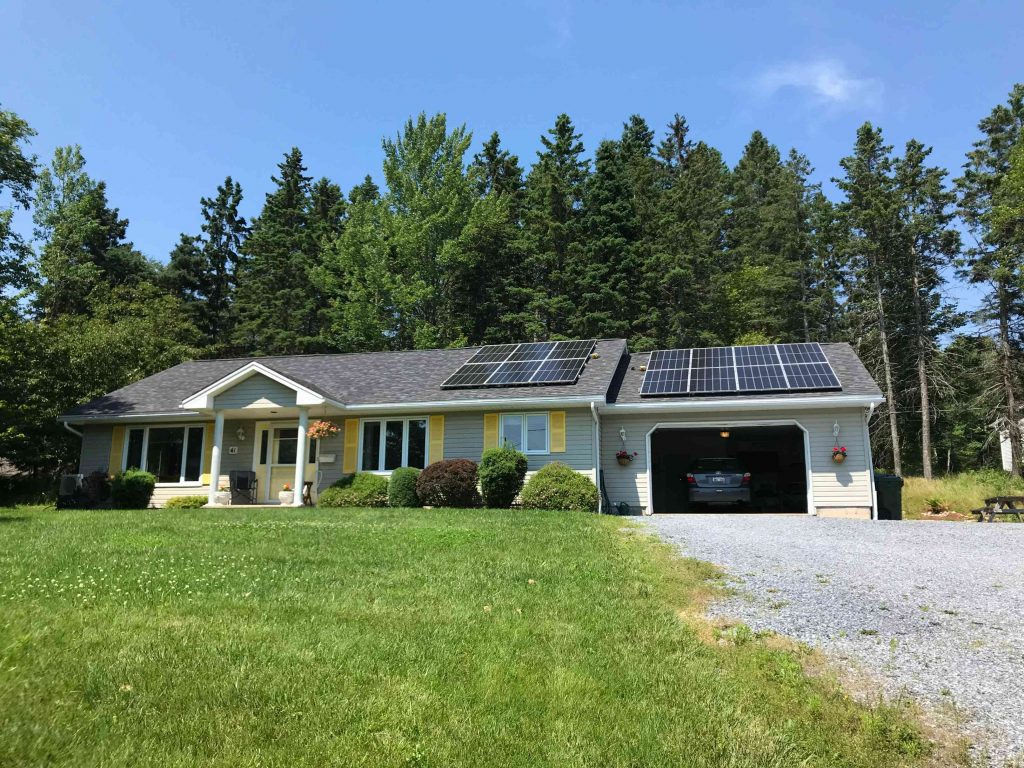Power outages: What you need to know
Power outages happen in pretty much every area that uses electricity. You might have found yourself asking, “What causes power outages?” or, “How long do power outages last?” If so, you’ll find the answers below. And we’re also going to tell you how to prepare for, check for, and report them – as well as how to use your solar panels during a power outage.
What are power outages?
Power outages (also known as blackouts) are when there is a loss of electrical power flowing to a particular area. Affected areas lose access to electricity for anything between a couple of minutes to several days – leaving homes and businesses without heat, light, and connectivity.
Some areas are more prone to power outages than others, especially areas with extreme weather or where infrastructure is still under development. Although blackouts can be inconvenient and often frightening, they shouldn’t be life-threatening situations if you prepare well in advance.
What causes power outages?
Outages occur for a number of reasons, such as extreme weather conditions, equipment failures, and human error.
Unfortunately, bad weather is still one of the biggest causes of power outages worldwide. Harsh winds and big storms can tear down power lines and topple power poles that often find themselves exposed and open to the elements.
While extreme weather can’t be avoided, there is a seemingly preventable second reason for power outages that can prove equally frustrating: lack of due diligence. This is a problem that occurs mostly due to lack of oversight of power lines, but can also be a result of improperly-maintained equipment.
Equipment failure due to power surges can also cause a power outage. Surges in electricity often lead to rapid overheating and loss of critical equipment. Although surge protection is typically integrated into the main power switchboard, there are still instances where surges can occur.
But power outages aren’t all awful accidents; some are planned – and your utility company should give you plenty of warning about any scheduled blackouts well in advance, so you can get prepared.
How do you prepare for a power outage?
Preparing for a power outage is crucial, and there are a few practical steps you can follow to ensure you’re always ready in the event you find yourself facing one.
Stock up on emergency supplies, including water, food, batteries, and a first aid kit. If you have a generator, make sure you have enough fuel to keep it running and that it’s always in good working condition. Keep your devices fully charged, but also have a battery-powered radio on hand so that you can stay informed of any updates, and save your cell-phone battery for emergencies. Equally important is unplugging any computers, televisions, and games consoles that may suffer from damage if there’s a surge when the power comes back on.
To ensure you’ve got a consistent supply of electricity, it’s critical that your solar panels are in good working order before any outages occur. There are a few steps you can take to check this:
- It’s always important to regularly check your PV system for any damage or debris on the panels and mounting equipment.
- Ensure your inverter is working correctly. Checking the light on your inverter is an easy way to monitor the health of your solar panels. A steady green light is good; anything else is typically bad news.
- Keeping an up-to-date record of your solar energy readings can help you identify dips in performance, ensuring that any issues are fixed before a power outage.
Blackout preparation will look different for every household, but ensuring you’ve got a plan in place is key. By following the simple steps above, you can be sure that your home or place of business is at least a couple of steps ahead in an emergency.
How to use solar panels during power outages
Solar panels can provide households with a reliable source of electricity during a blackout. But only if the right steps are taken before one occurs.
First thing to note is that if your system is on-grid (or grid-tied) without any battery backup, unfortunately, it won’t work during a power outage because your inverter depends on the grid to operate.
But off-grid systems can use a battery-powered backup system to keep things running in the event of a blackout. When the power goes down, your solar system automatically switch into off-grid mode, allowing your battery-powered backup to kick in and keeping your power running.

How to stay connected during a power outage using energy storage
Staying connected during a power outage is key – and there are a couple of solutions that you can look into if you’re aiming to use your solar PV system for backup electricity.
Our hybrid inverter is a DC-coupled solution for a new solar installation. With it, users can get prepared for energy storage right away. The HYS-LV series features high-performance single-phase hybrid inverters with excellent reliability, including a power class ranging from 3 kW to 6 kW. We also offer three-phase HYT-HV series for users who are on three-phase grid.
If you already have a PV system and would like to retrofit an energy storage component, our battery inverter is an AC-coupled solution for an existing solar system. (Read more about DC- and AC-coupling here.)
The HAS-LV-EUG1 series is designed for retrofitting PV systems, including power classes ranging from 3 kW to 5 kW. They can be installed with existing PV inverters, forming an AC-coupled system, and can be used with both Hoymiles microinverters and microinverters from other suppliers. They are also available in three-phase.
Our battery inverters are also compatible with a wide range of different systems and generators – giving you added flexibility and peace of mind when making a purchase.
The EMS function of both systems supports self-consumption mode, economic mode, and backup mode for multi-scenario applications – meaning you stay connected even during a power outage. Managing your equipment through S-Miles Cloud allows users to remotely monitor and track the system’s performance over time, maximizing the total solar power production, energy storage, and battery utilization.
How long do power outages last for?
The length of time that power outages last can vary greatly depending on what caused them in the first place. And wondering how long an outage could last might feel a bit like asking, “How long is a piece of string?” But there are some ballpark figures you can keep in mind.
Severe weather conditions like thunderstorms or heavy rain can last for anything between a few hours to several days (very rarely, weeks). Usually, the more severe the storm, the longer a power outage may last if one occurs – this is down to both the extent of the damage and any delays in getting repairs organized. However, that’s not to say that you should expect blackouts every time it rains.
Similarly, in the event of damaged equipment, outages can last from a few hours to several days. Again, the duration will depend greatly on the extent of the damage, and the availability of a repair crew.
If your utility company has informed you of planned maintenance works, they will also advise you on how long your power will be out for. Typically, these outages are kept to a few hours or less to minimize disruption. You should also have ample time to prepare for these types of outages.
How to check for power outages in your area
There are several ways you can get ahead of the game and check for outages in your area, although more specific methods of verification may vary by country and region.
The easiest way to see if you’re about to experience or have recently experienced a power outage is by checking your utility company’s website. Most utility providers will update their websites with real-time information about outages in the areas they serve. Alternatively, you can check a power outage website that offers the same kind of information. For example, poweroutage.us allows you to put your zip code in to get access to real-time localized data.
If you can’t find the information you’re looking for online anywhere, you can contact your utility company directly, and they should be able to point you in the right direction. And if all else fails, in an emergency you can use social media to confirm whether you’re currently experiencing an area-wide blackout.
How to report power outages
As important as it is to find out whether you’re currently experiencing a blackout, or if there’s a one planned in the near future, you should also report power outages as soon as you identify them.
The fastest way to report a blackout is by phoning up your utility company – you can find their number on their website, or any correspondence they’ve sent you. It’s useful to have the number written down somewhere in case you’re left without connectivity for whatever reason.
It’s crucial to let your utility company know as soon as possible, because they’re the ones who can organize repairs and get your electricity back up and running.
Power outages aren’t pleasant for anyone, and they can be stressful if you happen to find yourself ill-prepared. But by following the steps in this article, you should be more than ready to deal with a power outage in your area if you need to.
